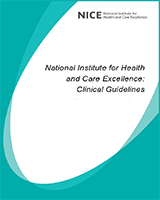From: Evidence review for step 4 treatment

NCBI Bookshelf. A service of the National Library of Medicine, National Institutes of Health.
| Field | Content |
|---|---|
| Review question | What is the most clinically and cost-effective step 4 antihypertensive drug treatment for hypertension in adults? |
| Type of review question |
Intervention review A review of health economic evidence related to the same review question was conducted in parallel with this review. For details, see the health economic review protocol for this NICE guideline. |
| Objective of the review | To establish which step 4 treatment is most clinically and cost effective in adults with hypertension that remains uncontrolled following step 3 treatment. |
| Eligibility criteria – population / disease / condition / issue / domain |
Population: Adults (over 18 years) with primary hypertension are taking the maximally tolerated doses of at least 3 drugs (including a diuretic) and their blood pressure is still uncontrolled. Stratify by:
|
| Eligibility criteria – intervention(s) / exposure(s) / prognostic factor(s) | Step 4 antihypertensive pharmacological treatment received for a minimum of 1 year.
|
| Eligibility criteria – comparator(s) / control or reference (gold) standard |
|
| Outcomes and prioritisation | All outcomes to be measured at a minimum of 12 months. Where multiple time points are reported within each study, the longest time point only will be extracted. Critical
Important
|
| Eligibility criteria – study design | RCTs and SRs |
| Other inclusion exclusion criteria | Minimum follow up time: 1 year Exclusions:
|
| Proposed sensitivity / subgroup analysis, or metaregression | Subgroups to explore heterogeneity:
|
| Selection process – duplicate screening / selection / analysis | A senior research fellow will undertake quality assurance prior to completion. |
| Data management (software) |
Pairwise meta-analyses will be performed using Cochrane Review Manager (RevMan5). GRADEpro will be used to assess the quality of evidence for each outcome. Endnote will be used for bibliography, citations, sifting and reference management. |
| Information sources – databases and dates |
Medline, Embase, the Cochrane Library Language: Restrict to English only Key papers: PATHWAY-2 trial (2015) http://www |
| Identify if an update | Yes, 2011 |
| Author contacts |
https://www |
| Highlight if amendment to previous protocol | For details, please see section 4.5 of Developing NICE guidelines: the manual. |
| Search strategy – for 1 database | For details, please see appendix B |
| Data collection process – forms / duplicate | A standardised evidence table format will be used, and published as appendix D of the evidence report. |
| Data items – define all variables to be collected | For details, please see evidence tables in appendix D (clinical evidence tables) or H (health economic evidence tables). |
| Methods for assessing bias at outcome / study level |
Standard study checklists were used to appraise individual studies critically. For details, please see section 6.2 of Developing NICE guidelines: the manual The risk of bias across all available evidence was evaluated for each outcome using an adaptation of the ‘Grading of Recommendations Assessment, Development and Evaluation (GRADE) toolbox’ developed by the international GRADE working group http://www |
| Criteria for quantitative synthesis | For details, please see section 6.4 of Developing NICE guidelines: the manual. |
| Methods for quantitative analysis – combining studies and exploring (in)consistency | For details, please see the separate Methods report for this guideline. |
| Meta-bias assessment – publication bias, selective reporting bias | For details, please see section 6.2 of Developing NICE guidelines: the manual. |
| Confidence in cumulative evidence | For details, please see sections 6.4 and 9.1 of Developing NICE guidelines: the manual. |
| Rationale / context – what is known | For details, please see the introduction to the evidence review. |
| Describe contributions of authors and guarantor | A multidisciplinary committee developed the evidence review. The committee was convened by the National Guideline Centre (NGC) and chaired by Anthony Wierzbicki in line with section 3 of Developing NICE guidelines: the manual. Staff from the NGC undertook systematic literature searches, appraised the evidence, conducted meta-analysis and cost-effectiveness analysis where appropriate, and drafted the evidence review in collaboration with the committee. For details, please see Developing NICE guidelines: the manual. |
| Sources of funding / support | The NGC is funded by NICE and hosted by the Royal College of Physicians. |
| Name of sponsor | The NGC is funded by NICE and hosted by the Royal College of Physicians. |
| Roles of sponsor | NICE funds the NGC to develop guidelines for those working in the NHS, public health and social care in England. |
| PROSPERO registration number | Not registered |
From: Evidence review for step 4 treatment

NCBI Bookshelf. A service of the National Library of Medicine, National Institutes of Health.